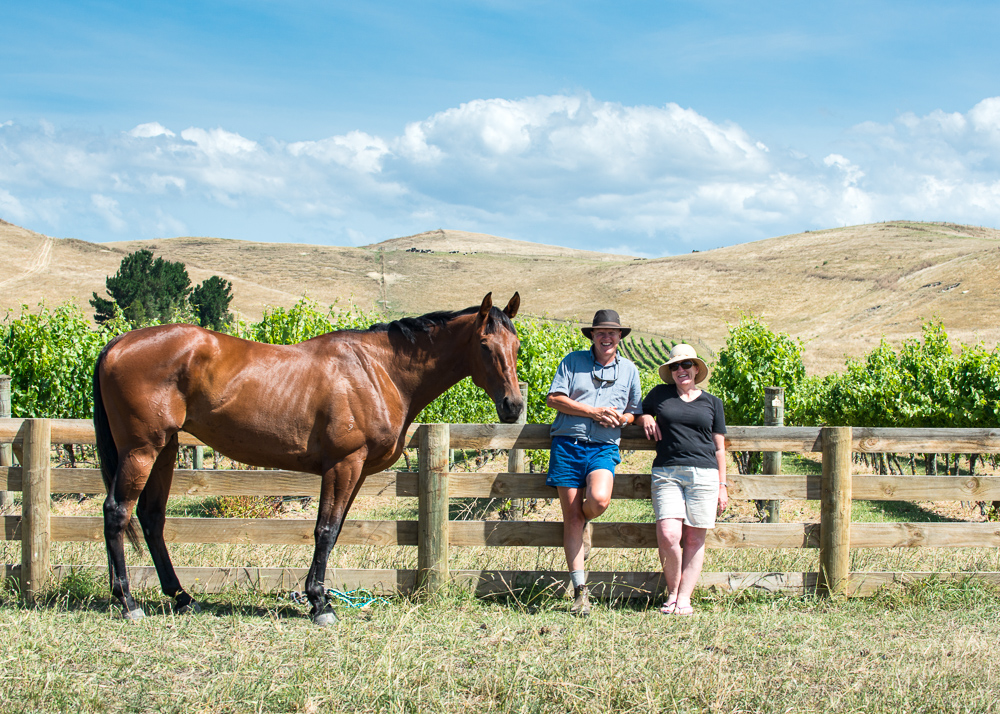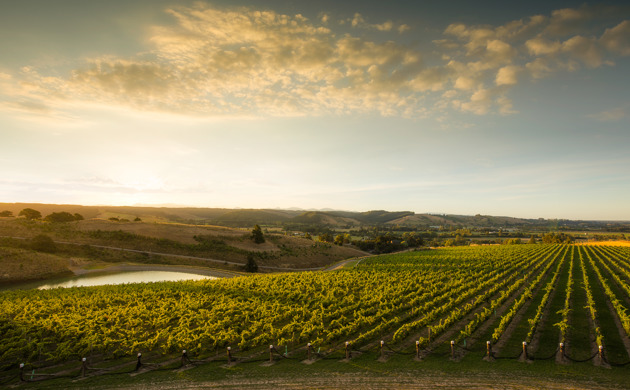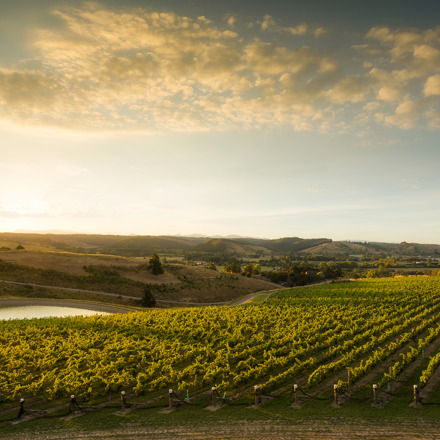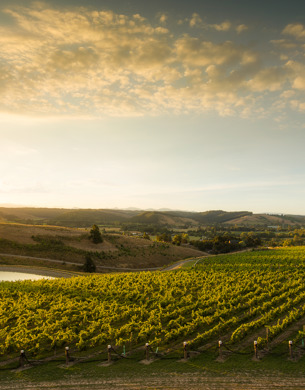Sophie Preece

Growing grapes has been a balancing act between personal satisfaction and economic sustainability, says New Zealand Winegrowers Fellow Chris Howell. “You need something to float your boat in terms of quality, but you also need something to pay the bills.”
During their 30 years growing fruit at Prospect Vineyard on Hawke’s Bay’s Heretaunga Plains, Chris and his wife Catherine found a happy medium between that floating boat – including Cabernet Franc for Pyramid Valley – and higher volume lease blocks that kept their heads above water. “While it was gratifying and nice to grow high end fruit it doesn’t pay the bills in the long run,” says Chris, who sold the vineyard late last year. “If you are a contract grower, volume is the game.”
Chris was named a Fellow this year for his services to industry organisations and education, having served on New Zealand grape and wine industry organisations for three decades, and played a key role in establishing the Young Viticulturist of the Year competition. He’s been deeply involved in evolving wine training, and still serves as a Trustee of the Bragato Trust.
But when he joined the Hawke’s Bay Grape Growers in 1997, he’d only been growing a few years, “and there were some pretty experienced guys like Jim Hamilton,” he says, recalling an unexpected “shoulder tap” from Stuart Devine. “In my youthful enthusiasm I said, ‘why not?’”
By 2000 he was President and when the united industry organisation was formed, Chris served on the Hawke’s Bay Winegrowers Board from 2005-2007. He was elected to the New Zealand Grape Growers Council between 2000 and 2004 and was a New Zealand Winegrowers (NZW) Board member from 2005 to 2016. He says it is “a real honour” to be recognised alongside previous fellows like Steve Smith MW, Kate Radburnd and Sir George Fistonich, “who have made significant contributions to the industry”.
"Most people get into the wine industry for passion and love for the product rather than business.”
Chris had a degree in politics and psychology and a diploma in media studies when he and Catherine set off for three years abroad. They had been growing their appetite for quality New Zealand wines before they left, but it was on their travels through France and Italy that wine wedged into their life plans. “It was fantastic looking at the wines and seeing what you could buy and how it was grown,” he says.
“That really fired it up.” When they came home in late 1992,
Catherine studied winemaking and viticulture at Lincoln University, while Chris worked for Kym Raynor at the Torlesse winery in Waipara. From there, they both ended up in Hawke’s Bay, with Catherine working in the lab at Vidal Wines and Chris in the cellar at Corbans, where he stayed three years before moving to Morton Estate and Sileni, then in its infancy.
The couple were meanwhile developing and planting their own vineyard on 16 hectares of the Heretaunga Plains. “We could have bought a chunk of land in the gravels, but we needed to be able to live onsite because we didn’t have any capital left over to buy another house,” he says.
Chris grew up on a lifestyle block in the Waikato and spent time on farms, growing a dream of working in primary production while wondering how he’d ever be able to buy land. Vines seemed a possibility and an exciting industry, he says. “And it was back then, in the early 1990s. There was huge growth in the industry.”
It turns out Marlborough would have been a far better long-term choice for the bank balance (“hindsight is a good thing”) but the couple spoke to several people about where to plant and what to grow, and Hawke’s Bay became the natural choice, “because I didn’t want to just grow Sauvignon Blanc”, he says. “It was a passion project, like it is for a lot of people. Most people get into the wine industry for passion and love for the product rather than business.”
So they leapt right in, relying on help and advice from industry folk like Steve Smith, who was at that stage working at Villa Maria. “He gave us a lot of help. Without that mentorship it would have been a lot harder.” Three decades on, the industry is just as collegial, Chris says, happy to have passed on his own experience to others over the years. “You give your knowledge for free, because it’s going to take them a long time to catch up with you.”
“There’s an old saying amongst growers that tonnage beats brix in terms of how you get paid, and it still holds true.”
Back in those early days, they “plonked” an old house onto the property and undertook their first planting, with 1ha of Chardonnay and 1.5ha of Merlot. Within five years they had transformed three paddocks and had 12.5ha in canopy, that was “well performing, I hope”, says Chris. But there were hard-won lessons along the way. “Our first vintage was 1998 – and you can’t ever complain about that,” he says. But in 2001 the vintage was severely impacted by frost and the 40 tonnes they had anticipated shrunk to 600kg instead. It was a “heavy blow to take”, says Chris. “That was pretty tough because we had no other income, and we had young kids.”
In 2003, another frost cut their production in half, and they and others looked to install costly frost protection. “That, and the loss of income from those two seasons, really put us on the backfoot for a long time,” he says. “It’s pretty tough and you have to dig pretty deep.” Over the years there were other seasons with less fruit, because of rain or a bit of frost damage, and they were also hit with one winery making a very late call not to pick fruit, and a buyer going into liquidation.
The couple soon learned – assisted by the Ministry for Primary Industries Viticulture Benchmarking process – that it was wise to carry a mix of varieties, “because it spreads your risk over the season, in terms of timing”, but also a mix of volume, to protect their prospects, as it were. “There’s an old saying amongst growers that tonnage beats brix in terms of how you get paid, and it still holds true,” says Chris. He’d like to see a greater industry focus on financial sustainability, along with recognition of the cost to growers of bad seasons, bad business or simply rising costs. “We need to pay more attention to it and work out some better models.” Growers “live and breathe” their vines and grapes and it can be pretty tenuous at times, he says. “We need to find some balance there too.”
Recent concerns have been the ascendency of size and volume in Hawke’s Bay’s wine industry, with small blocks bought up by bigger players or pulled out for lifestyle blocks. “When the Hawke’s Bay Growers Association started there were 170 odd growers and now there’s closer to 60,” says Chris. “So it has really shrunk - not in terms of area but in terms of industry participants. That’s where some of the flavour of the industry gets lost.”
It’s been 30 years of highs and lows, but the sum total has been a “fantastic” lifestyle, says Chris. “We could have made more money in other businesses, but it wouldn’t have been as much fun. And we have grown some really good wines over the years.”
This was first published in New Zealand Winegrower magazine issue 136 and is republished with permission.






